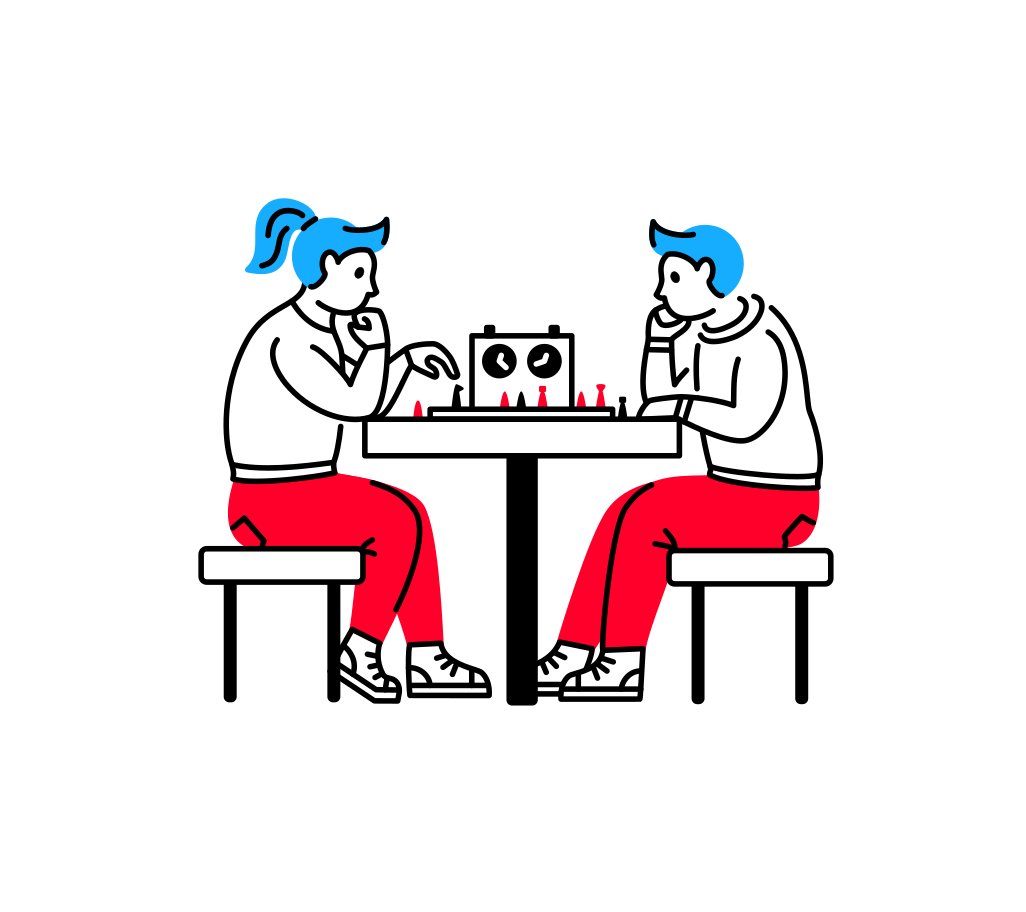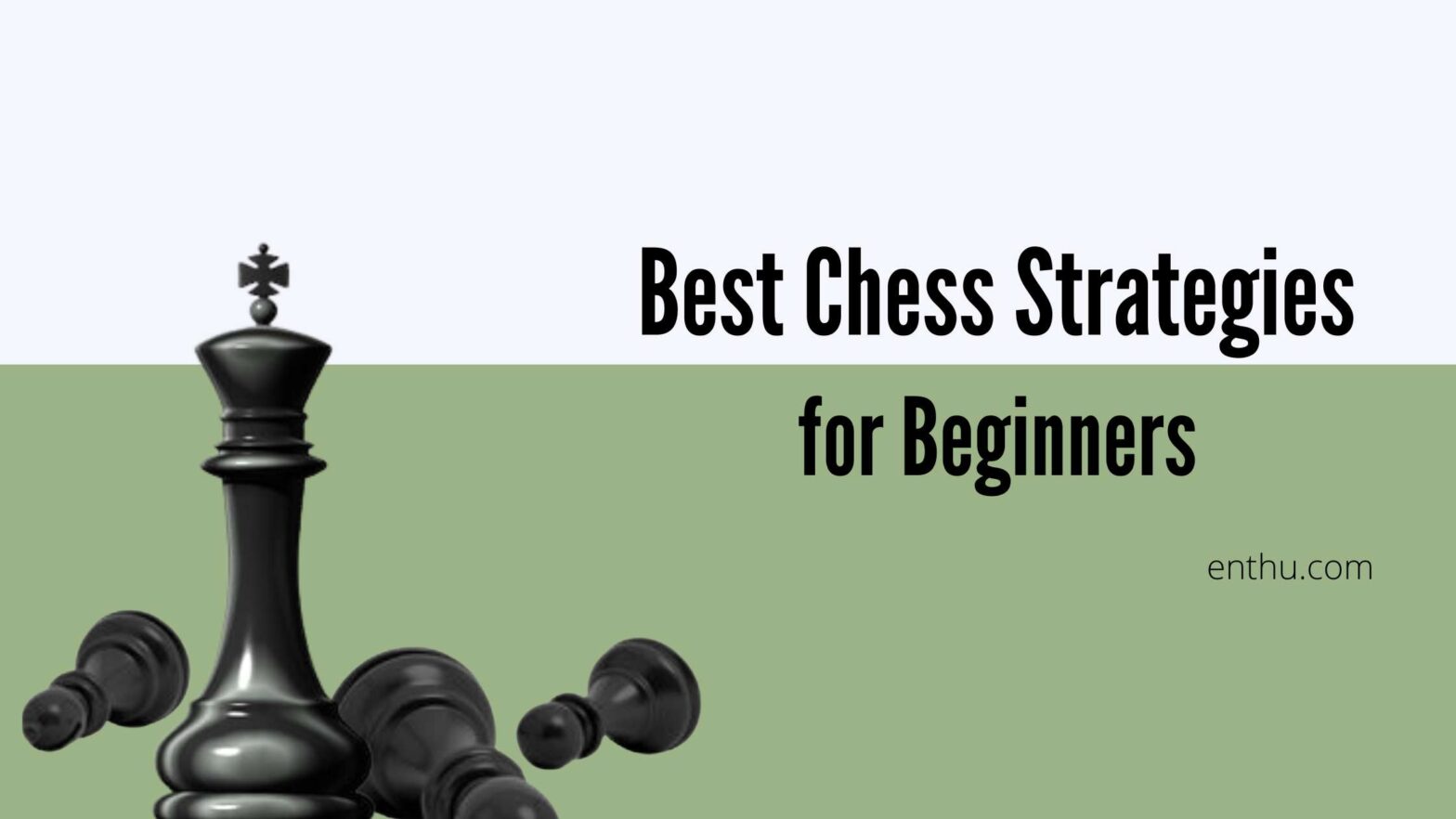Are you a chess enthusiast looking to kick-start your journey into the world of kings, queens, knights, and pawns? And do you want to know the best chess strategies for beginners? With its minimal rules but seemingly endless possibilities, chess appeals to casual players and competitive enthusiasts alike. It’s a battle of wits that can be exciting and intimidating for beginners.
So do not worry! In this blog, we’ll walk you through some top chess tactics for beginners to help you enjoy the game and gradually develop your skills.
Understand the Basics
Before you start using tricky plans, it’s essential to understand the basic chess strategies. In chess, the board has 64 squares in an 8×8 grid, where kings and queens fight. Each player begins with 16 pieces, including a king, queen, rooks, knights, and pawns. The main goal is to trap your opponent’s king while keeping you safe. Additionally, the bishop, a chess piece, moves at an angle, allowing it to cover more than one square at a time. The rook (castle) can move only in a straight line but can go forward, back, or to the side. The bishop moves at an angle, similar to the rook, but it can cover more than one square at a time.
Learn the rules of how each piece moves.
- Pawns move forward but capture diagonally.
- Knights move in an L-shape: two squares in one direction and one square perpendicular to it.
- Bishops move diagonally.
- Rooks move horizontally and vertically.
- Queens can move in any direction.
- Kings can move one square in any order.

Controlling the Center to Control the Game
The center of the board is like the heart of chess. Controlling it provides greater mobility and options for your pieces, including the central squares, d4, e4, d5, and e5, known as the center squares. Placing your pawns and pieces in the center squares allows them to move and attack more spaces than on the board’s edge. It also restricts your opponent’s mobility. That is why you should fight from move 1 for central control. And with 1.e4 or 1.d4, you do precisely this. You take some valuable squares in the center under control and open the way for your white knight to develop towards the center. This central knight can easily be re-routed to kingside or queenside, depending on where the rival has castled when building an attack against the opponent’s king. Similarly, the defending side will do so easier with central pieces.

Tips to Control the Center
- Occupy the center with your pawns
- Move your pieces to control more central squares.
- Neutralize or chase enemy pieces that control the center.
- Exchange a flank pawn for a central pawn to strengthen your control.
Develop Your Pieces
One of the most essential beginner chess strategies for beginners is piece development. The fundamental strategy in the opening is to develop your minor pieces efficiently – your knights and bishops. Use your pawns to take control of the center of the board, and strategically place your other pieces, such as the long-range pieces, in squares where they can control a lot of space. These beginner chess strategies are strategic principles for the whole game of chess.
Tips for developing your pieces quickly:
- Knights and bishops are the easiest pieces to develop because they can move over other pieces. So, develop your knights and bishops into active squares to control more space and attack your opponent’s pieces.
- Rooks and queens are more difficult to develop because they cannot move over other pieces. However, they are also more powerful pieces. Try to develop your rooks and queen into active squares to control more space and attack your opponent’s pieces.
- Every time you move a piece, you lose time. So, develop your pieces efficiently and only move the same piece a few times.
Castle Early for King Safety
Castle, often called “king-side” or “queen-side” castling, is a move that helps ensure your king’s safety and connect your rooks. It is a special king move that helps get your king to safety and protect it from early threats.

Tips to achieve early castling for king safety :
- Recognize that the safety of your king should be one of your top priorities in the opening phase of the game.
- Castle kingside if there are no threats on that side of the board. Kingside castling is often safer as the king ends up protected by the pawn structure.
- Castle queenside if the kingside looks dangerous or under early attack.
- Make sure the path is clear before castling. Don’t castle if there are pieces in the way that would allow your opponent to capture your king.
- Develop knights and bishops before castling. Get your other pieces out to help cover key squares around your king before exposing it through castling.
- Create a pawn shelter around the king. Use pawns to control key central squares and limit access to your king.
- Avoid moving the pawn before your castled king, as this compromises protection.
Connect Your Rooks
Connecting rooks on the chessboard is a fundamental chess strategy that involves coordinating the two rooks to work together effectively.
Connected rooks can dominate a game’s middle stage by attacking open lines and double-teaming your opponent’s pieces. Having connected rooks piercing through central squares gives you great attacking opportunities.

Tips for connecting your rooks in chess:
- Castling early is the easiest way to connect your rooks and protect your king.
- Open up the center of the board. The more open the center is, the easier it will be for your rooks to move around and connect with each other.
- Exchange flank pawns for central pawns.
- Use your other pieces to support your rooks.
- Be aware of your opponent’s plans. If your opponent is trying to prevent you from connecting your rooks, try to find a way around it.
Check out EnthuZiastic Chess Classes for a personalized Chess learning experience.
Don’t Neglect Pawn Structure
As François-André Danican Philidor famously said, your pawns are the game’s soul. They affect how the game goes, showing if it is open or closed and determining how the pieces should be used.
In our next game, we see Hungarian grandmaster Istvan Csom create an open file using the h-pawn and then systematically and patiently put his major pieces on it. His opponent, who controls the a-file, is diverted away to protect other weaknesses.Csom then takes control of that file and uses both the a-file and h-files for his major pieces, winning a beautiful game. At the same time, the rook on d1 hits the black pawn on d6, forcing his opponent to always keep an eye on it. He has placed his other rook on c1 – not an open file, but an important one. From here, it supports the c4 pawn, but will also make possible different tactical ideas against the black queen on c7.

Don’t move pawns unnecessarily: In this famous example, f6 is an outpost for the white queen. Black weakened his kingside too much, and now he’s missing his dark-square bishop. Therefore, Short was able to play the beautiful 32.Kg3! Rce8 33.Kf4!! Bc8 34.Kg5! and Timman resigned in view of 34…Bxd7 35.Kh6 or 34…Kh7 35.Qxg6+ Kh8 36.Qh6+ Kg8 37.Kf6 with mate on g7 in both cases.
It’s good for the game when pawns move and open up space for pieces.This helps bishops and queens because they need open paths to move. If a pawn reaches the other end of the board without any enemy pawns in its way, it can be a game-changer.
Study Endgames
The endgame in chess is the game phase after exchanging most pieces. It is the stage of the game that happens at the end. Only some chess games reach the endgame, as some games are decided in the middlegame or even by early checkmates in the opening. The endgame begins when a few pieces are left on the board. The line between the middle and endgame often needs to be clarified and may occur gradually or with the quick exchange of a few pairs of pieces. In the endgame, one crucial strategy is brutally attacking the enemy king, anticipating their next move. This can be a decisive move that leads to victory.
- Learn basic endgame principles like opposition, triangulation, and zugzwang. Mastering these concepts will help across many endgame positions.
- Study key theoretical endgames like king+pawn vs king and rook vs minor piece endgames. These often arise, so know the theory cold.
- Practice basic mates like king+queen vs king and rook+king vs king. Quickly delivering basic mates is critical.
- Study techniques for converting an extra pawn in endgames. Learn to use your king actively and create a passed pawn.
- Analyze and memorize key endgame positions and techniques. Some require precise moves to win or draw.
- Study endgame strategy concepts like when to exchange pieces, transitioning to an endgame, and piece placement.
Learn from Your Games
While chess mastery takes years of practice, there are a few basic chess strategies beginners can apply immediately to improve their game.
One of the best ways to improve your chess skills is to review your games. After each game, take some time to analyze your moves, whether you win or lose. Identifying mistakes and missed opportunities, such as overlooking a threat or blundering a piece. Learning from your games and implementing lesser-known chess strategies, like those taught in the video course by GM Bryan Smith, is an invaluable source of improvement. Patient thinking, combined with the secrets of Chess Strategy Mastery shared by GM Bryan Smith, is the key to chess success.
FAQs
What is chess strategy?
Chess strategy is the long-term planning and decision-making process that players use to gain an advantage over their opponents. It involves assessing the overall position of the pieces on the board, identifying weaknesses in the opponent’s position, and developing plans to exploit those weaknesses.
What are some basic chess strategies for beginners?
Here are some basic chess strategies for beginners:
- Control the center of the board
- Castle as soon as possible
- Connect Your Rooks
- Don’t Neglect Pawn Structure
- Develop your pieces quickly and efficiently
How can I improve my chess strategy?
The best way to improve your chess strategy is to practice regularly and to study the games of stronger players.

Learn Chess From Expert Teachers
Conclusion
Learning basic chess strategies as a beginner sets you on the path to becoming a better player.
- Understand the Basics
- Controlling the Center
- Develop Your Pieces
- Castle Early for King Safety
- Connect Your Rooks
- Don’t Neglect Pawn Structure
- Study Endgames
Mastering these fundamental strategies will build a solid foundation for your chess skills. With practice, you can automatically apply these chess tips without much thought.
So, use these essential chess strategies today to gain an advantage over beginner opponents. And with time, your understanding of chess strategy will continue to grow. Learn more about chess fundamentals with EnthuZiastic.

